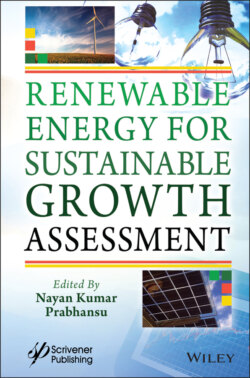Читать книгу Renewable Energy for Sustainable Growth Assessment - Группа авторов - Страница 81
3.3.1.5.2 Industrial Waste
ОглавлениеThe tannery industry is a leather processing industry, and mostly it manufactures leather from the skin and hides of sheep, pigs, and cattle. Solid waste, nearly around 850Kg, was disposed of per ton of raw materials (Table 3.4).
The solid wastes of tannery industry waste are rich in collagen and 3 to 5% chromium oxide [23]. This content presence prevents the debris from fast degradation, but the high rate of degradation cause an obnoxious, intolerable smell during summer. Then, chromium accumulation into the soil contaminates the groundwater systems and affects the lives of aquatic animals and humans. Therefore tannery waste shows a high impact on the environment and leads to the world’s ecological problem.
The primary source of industrial biomass comes from fish processing industries, including fish heads, viscera, vertebral column, fin, scales, and meat scraps as the fish processing industrial waste. The fish industry produces around 98g of fish waste per Kg of fish and fish crude oil waste of about 35g/100g of fish waste [24] (Table 3.4). However, these wastes are rich in micronutrients that cause a heavy impact on the environment if left untreated, mainly due to the high organic load.
Table 3.4 List of industrial waste biomass, the process of conversion, and biofuel products.
| Sources of industrial waste | Biomass | Process of conversion | Biofuel products | Reactor | Reference |
| Tannery industry | A mixture of pelletized leather tannery waste and hardwood pellets | Combustion | Ash | Laboratory-scale combustion reactor (Perforated flat grate of combustion test reactor) | [55] |
| Hides, collagen-based solid wastes - shavings and offcuts | Pre-treatment by extrusion and enzymatic degradation | Biogas along with diauxie | Bioreactor | [23] | |
| Fish industry | Fish waste (FW) and Fish crude oil waste (FCOW) extracted from common carp (Cyprinus carpio) viscera | Anaerobic digestion (AD) using VDI 4630 as a reference | Biogas (methane) | Anaerobic mono-digestion system - 2L glass reactor | [24] |
| Fish carcass and viscera | Oil extraction | Biofuel | - | [56] | |
| Combustible industry | Coal-water slurry based on coal processing waste (combustible industry waste) | Gasification by direct light induction through solar radiation (allothermal process) | Syngas | Nanosecond pulse and continuous-wave laser | [57] |
| Agroindustry | Cattle slaughterhouse waste - Slaughtering waste streams like paunch (PA), soft offal (SO) (intestinal residues, fat and meat trimmings, and some blood), dissolved air flotation sludge (DAF) | Anaerobic digestion (AD) at the mesophilic condition | Biogas | - | [25] |
The combustible industry is a fossil fuel industry like the coal processing industry. The waste arising from these industries is rich in hydrocarbon. On earth, the resources from fossils are costly and high in demand, and coal conversion technologies show adverse effects on contaminants’ atmosphere [58]. The animal-based agroindustrial sector releases a high amount of organic waste into the environment. This organic waste mainly consists of animal by-products like blood, paunch, fat and protein, bones of head and limb. It can spread human diseases like Creutzfeld-Jacob and bovine spongiform encephalopathy [25]. Considering these issues, researchers focused on converting industrial waste residues into energy resources (Table 3.4).
